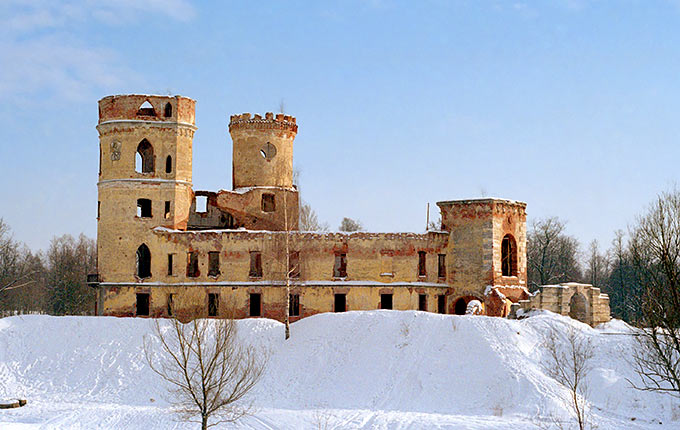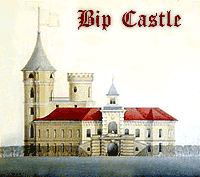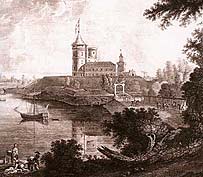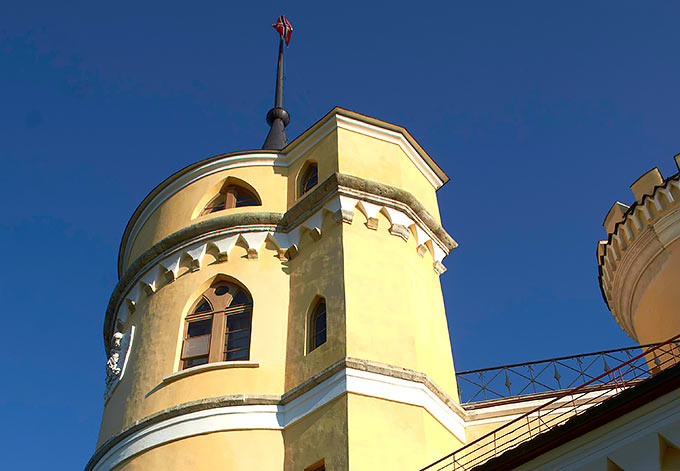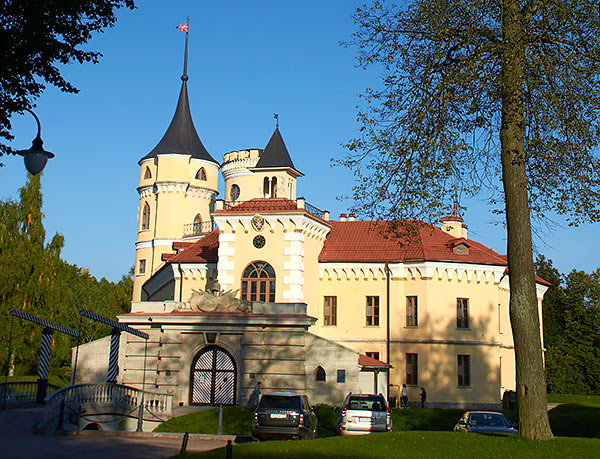History of Castle Bip (Mariental)
The Bip Castle was constructed in 1795-1797 under the project of architect V.F.Brenna by the order of emperor Paul I. There were remains of old Sweden fortification on the place of construction. This place is rather convenient for such kind of buildings.
The Castle was included in the military register of fortresses of the Russian Empire and there was small garrison under command of commandant Arakcheev. The drawbridge was lifted at the sunset and gun fired a shot on midday.
After Paul's I death various institutions had accommodation here such as the School for deaf children, Clinic of cavalry regiment, Aleksandrovskij college, Pavlovsk city board.
After October 1917 coup d’etat there were orphaned house, military komissariat or sovdep (local council of "peoples" deputies). During WWII the Bip Castle has burned down, and since then it is standing as romantic ruins on the bank of Slavjanka river.
P.S.: During my last expedition I found out fresh traces of excavations and hollows which digging for the inspection of building's foundation. The one of the rooms was cleaned, the garbage and soil were removed and the ground was sifted carefully for curiosities and antiquities.
P.S.2004: Well, now the castle fenced by the high metallic palisade and there are some building or restoring works runs inside.
P.S.2006: Well, there were the construction works of full scale. The concrete plates ceilings were made above first floor. It is not a reconstruction but new construction.
Impressions
I found this Castle some years ago by chance. One day in autumn I went for the walk to the Pavlovsk park and met nice and polite stranger girl (as it turned out - from Japan, Ivamadzuma). She asked me about that famous and mysterious Bip Castle. I did not know. We rambled around and tried to find it, but without success. So she leaved.
It was sad. If I had known something about this damned Castle, my fate would have been quite different. Even so I began the systematic researches and in some years of travels my efforts have born the fruit. Here it is - the genuine Castle with towers, ramparts and moats.
Land forts and fortress:
Bip Castle Gatchina Ivangorod Izborsk Kexholm Kirillov Monastery Koporye Novgorod Pechorskiy Monastery Peter&Paul Fortress Porkhov Pskov Schlisselburg Staraya Ladoga Tikhvin Vyborg Hameenlinna Hamina Kastelholm Kymenlinna Lappaenranta Raseborg Castle Savonlinna Tavetti Turku Visby Fredrikstadt Fredriksten Hegra Fort Hoytorp Fort Arensburg Narva Tallinn Antipatris Caesarea Jerusalem Latrun Fort Masada
Sea forts and fortresses:
Alexander Fort Ino Fort Krasnaya Gorka Fort Kronstadt: Kotlin isl. Kronstadt: North Forts Kronstadt: South Forts Trongsund Hanko Svartholm Sveaborg Marstrand Siaro Fort Vaxholm Oscarsborg
Artillery batteries and individual guns:
Coastal Artillery Hemso Fort
Fortified areas and defensive lines:
Karelian Fortified Area (KaUR) KrUR Leningrad Mannerheim Line Nevsky Bridgehead VT Line Harparskog Line Salpa Line Gothland
Russian
S e a r c h All news

